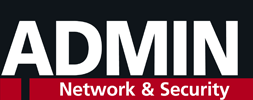
Photo by Oli Zubenko on Unsplash
Simplify your migration from Docker to Podman
Contained
Commercialization of open source projects and haggling over licensing issues are gnawing away at the acceptance of free software. This not uncommon switch to a commercial future often sounds the death knell for the community's willingness to participate in ongoing development. An unclear licensing policy on the part of Docker developers has led to many controversies in the past, and an audit clause now imposes an additional burden on IT departments. Little wonder then that Red Hat, SUSE, and other Linux distributions replaced Docker with Podman years ago.
To future-proof your own IT infrastructure, you need to be able to plan for the long term. And long discussions about licenses are likely to be counterproductive. Enter Podman [1], the open source project that has long been touted in the community as a replacement for Docker. A number of aspects – both strategic and technological – speak in favor of switching to Podman, including Podman Desktop, which simplifies container management.
Licensing Hassle at Docker
What kicked off the far-reaching changes to the licensing policy was the acquisition of Docker Inc. by Mirantis in November 2019. The provider now relies on a subscription model: For companies with more than 250 employees or an annual turnover of more than $10 million, depending on the subscription option chosen, the fee is $5, $9, or $24 per user per month – all with annual payment. Depending on how you use Docker in your organization, this can mean substantial additional IT costs.
The audit clause is another pain. According to the license agreements, users grant Docker the right to store data relevant to licensing for at least three years, which means that organizations need to take care to archive the data in a reliable way. The use of a special software asset management environment is required to provide
...Buy this article as PDF
(incl. VAT)
Buy ADMIN Magazine
Subscribe to our ADMIN Newsletters
Subscribe to our Linux Newsletters
Find Linux and Open Source Jobs
Most Popular
Support Our Work
ADMIN content is made possible with support from readers like you. Please consider contributing when you've found an article to be beneficial.







